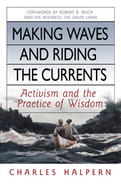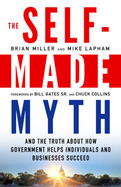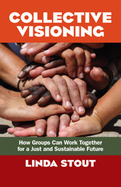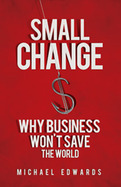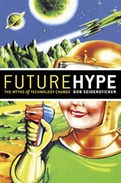Charles Halpern is a social entrepreneur with a remarkable record of institutional innovation. He founded the Center for Law and Social Policy, the nation's first public interest law firm, litigating landmark environmental protection and constitutional rights cases. As founding dean of the new City University of New York School of Law he initiated a bold program for training public interest lawyers as whole people. Later, as president of the $400 million Nathan Cummings Foundation, he launched an innovative grant program that drew together social justice advocacy with meditation and spiritual inquiry.
In his years of activism, he had a growing intuition that something was missing, and he sought ways of developing inner resources that complemented his cognitive and adversarial skills. These explorations led him to the conviction that what he calls the practice of wisdom is essential to his effectiveness and well-being and to our collective capacity to address the challenges of the 21st century successfully.
With wit and self-deprecating humor, Halpern shares candid and revealing lessons from every stage of his life, describing his journey and the teachers and colleagues he encountered on the way—a cast of characters that includes Barney Frank and Ralph Nader, Ram Dass and the Dalai Lama. Making Waves and Riding the Currents vividly demonstrates the life-enhancing benefits of integrating a commitment to social justice with the cultivation of wisdom. It is a real-world guide to effectively achieving social and institutional change while maintaining balance, compassion, and hope.
This book is about working for a more just, compassionate, and sustainable world while cultivating the wisdom that supports and deepens this work.
Charles Halpern is a social entrepreneur with a remarkable record of institutional innovation. He founded the Center for Law and Social Policy, the nation's first public interest law firm, litigating landmark environmental protection and constitutional rights cases. As founding dean of the new City University of New York School of Law he initiated a bold program for training public interest lawyers as whole people. Later, as president of the $400 million Nathan Cummings Foundation, he launched an innovative grant program that drew together social justice advocacy with meditation and spiritual inquiry.
In his years of activism, he had a growing intuition that something was missing, and he sought ways of developing inner resources that complemented his cognitive and adversarial skills. These explorations led him to the conviction that what he calls the practice of wisdom is essential to his effectiveness and well-being and to our collective capacity to address the challenges of the 21st century successfully.
With wit and self-deprecating humor, Halpern shares candid and revealing lessons from every stage of his life, describing his journey and the teachers and colleagues he encountered on the way a cast of characters that includes Barney Frank and Ralph Nader, Ram Dass and the Dalai Lama. Making Waves and Riding the Currents vividly demonstrates the life-enhancing benefits of integrating a commitment to social justice with the cultivation of wisdom. It is a real-world guide to effectively achieving social and institutional change while maintaining balance, compassion, and hope.
2012
Exposes the damage caused by the myth of the "self-made man" and reveals how wealth is actually created.
The Self-Made Myth exposes the false claim that business success is the result of heroic individual effort with little or no outside help. Brian Miller and Mike Lapham bust the myth and present profiles of business leaders who recognize the public investments and supports that made their success possible—including Warren Buffett, Ben Cohen of Ben and Jerry's, New Belgium Brewing CEO Kim Jordan, and others. The book also thoroughly demolishes the claims of supposedly self-made individuals such as Donald Trump and Ross Perot. How we view the creation of wealth and individual success is critical because it shapes our choices on taxes, regulation, public investments in schools and infrastructure, CEO pay, and more. It takes a village to raise a business—it's time to recognize that fact.
2006
In the past 230 years, we've lost sight of Paine's vision. Our government has adopted a YOYO (you're-on-your-own) response in the face of even the most pressing national problems—diminished job security, the rising number of Americans without health coverage, stagnant incomes, decaying public schools, and more. “Here's a tax cut and a private account,” they tell us, “now go fend for yourself.”
It hasn't worked. The YOYO strategy has proven to be incapable of addressing the economic challenges that confront us and has instead led to a massive upward shift in wealth and opportunity favoring the few and deteriorating living standards and increasing insecurity for the rest of us.
All Together Now details an alternative WITT (we're-in-this-together) strategy for solving our most daunting problems. Detailing practical, collaborative responses to globalization, health care, employment, and other areas that could improve the lives of millions of Americans without increasing national spending, All Together Now shows that the challenges we face can be solved. Together, we can wield the tools of government to build a more just and equitable society.
• Exposes the destructive consequences of the 'you're on your own" approach to dealing with pressing societal problems
• Shows how a more collaborative 'we're all in this together" strategy can better resolve these problems and ensure that risks and benefits are shared equitably
• Details specific alternatives to current policies in areas like globalization, health care, and employment
2011
Stout shows, in practical terms, how to bring a group together, build trust, ensure that each and every voice is heard, create a positive vision, and develop an action plan that leverages everyone's abilities to bring that vision to fruition. Used successfully by more than 120 organizations—and illustrated here by dozens of practical examples and exercises—this process creates hope for change, even among those who've stopped believing that change is possible. This comprehensive guide will serve as a template for anyone seeking to create a better, more just tomorrow.
-
Shows activists how to develop an inclusive, inspiring vision of the future they want to create
-
Offers a process that guarantees the voices of marginalized people are heard and enables people of all backgrounds to work together with honesty, passion, commitment, and joy
-
Filled with examples and exercises taken from Linda Stout's decades of organizing
All of us want a future that's promising and a way to get there. For decades, activists and community groups have worked to create equitable solutions. Why then are so many of us disappointed at the results?
Despite sincere and well-intentioned efforts, organizers often fall short in creating groups in which people from all backgrounds feel comfortable speaking up. And while progressives are good at articulating what they're against, for a variety of reasons they have a tougher time getting specific about what they're for--creating a positive, energizing vision.
Linda Stout, a lifelong agent of social justice, introduces a process designed to ensure that all voices are heard, an inspiring vision of the future is agreed on, and an action plan is developed that leverages everyone's diverse talents and abilities. Used successfully by over 120 organizations, it creates hope for change among those who've stopped believing change is possible.
Stout lays out the extensive and innovative prework that must be done to build trust and openness before any kind of meeting is held--a distinctive feature of collective visioning. She describes creative approaches for encouraging people to share their histories and most deeply held personal values, and she explains how understanding why each person is drawn to the work is vital in designing action strategies that build on people's particular strengths. She illustrates her points with inspiring stories of what collective vision can accomplish, drawn from her decades of committed activism.
Collective Visioning is a complete guide for leaders seeking to create inclusive movements that work from a place of hope to create a better, more just tomorrow.
2010
2006
- Convincingly debunks the myth that technology today is changing at an unprecedented rate and totally transforming modern society
- Gives readers the perspective to look skeptically at claims that every new technology is a world-changing breakthrough they must have
- Written by a twenty-five-year veteran of the high-tech industry who spent eight years as a Microsoft project manager


